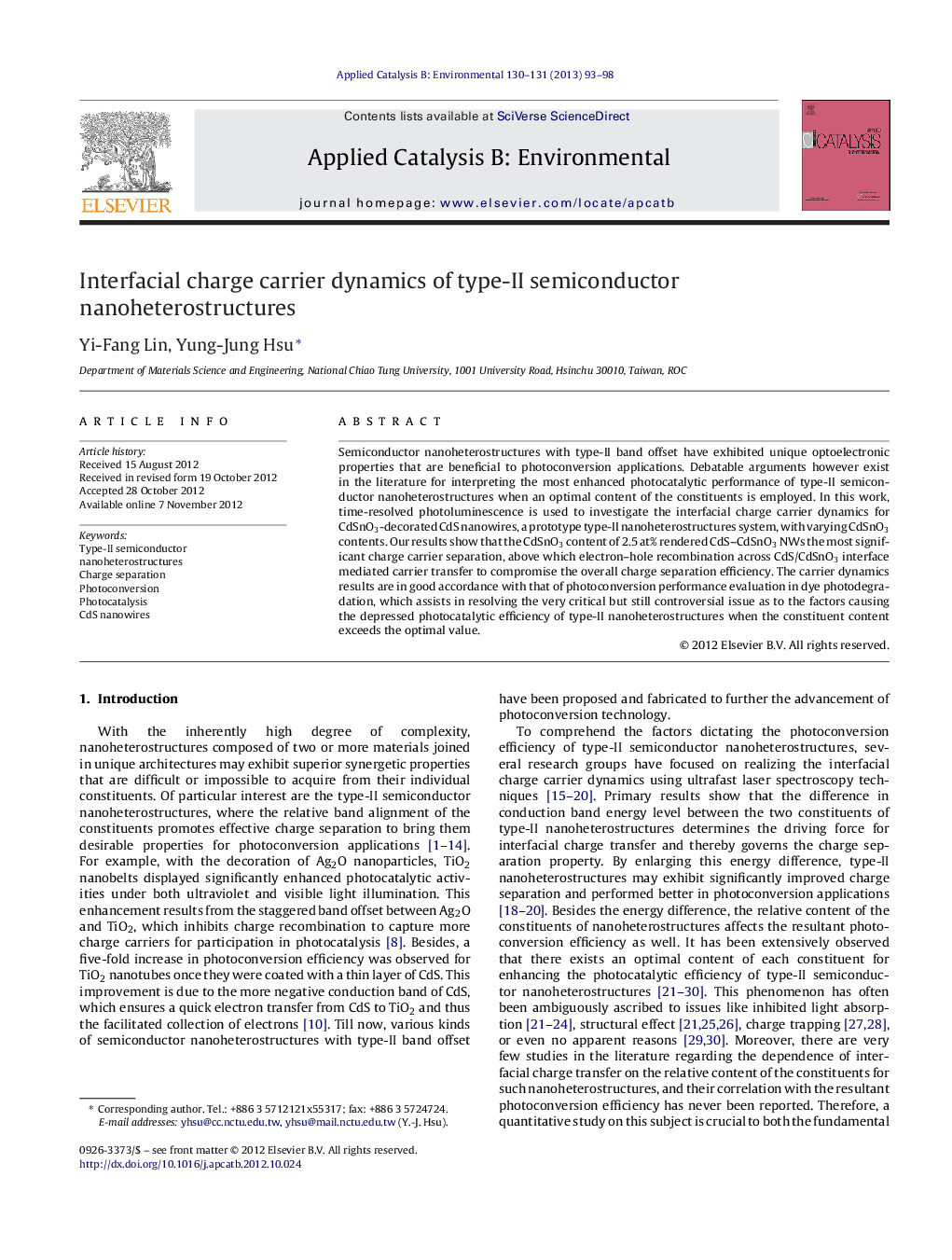| Article ID | Journal | Published Year | Pages | File Type |
|---|---|---|---|---|
| 45819 | Applied Catalysis B: Environmental | 2013 | 6 Pages |
Semiconductor nanoheterostructures with type-II band offset have exhibited unique optoelectronic properties that are beneficial to photoconversion applications. Debatable arguments however exist in the literature for interpreting the most enhanced photocatalytic performance of type-II semiconductor nanoheterostructures when an optimal content of the constituents is employed. In this work, time-resolved photoluminescence is used to investigate the interfacial charge carrier dynamics for CdSnO3-decorated CdS nanowires, a prototype type-II nanoheterostructures system, with varying CdSnO3 contents. Our results show that the CdSnO3 content of 2.5 at% rendered CdS–CdSnO3 NWs the most significant charge carrier separation, above which electron–hole recombination across CdS/CdSnO3 interface mediated carrier transfer to compromise the overall charge separation efficiency. The carrier dynamics results are in good accordance with that of photoconversion performance evaluation in dye photodegradation, which assists in resolving the very critical but still controversial issue as to the factors causing the depressed photocatalytic efficiency of type-II nanoheterostructures when the constituent content exceeds the optimal value.
Graphical abstractFigure optionsDownload full-size imageDownload as PowerPoint slideHighlights► Interfacial charge carrier dynamics of type-II semiconductor nanoheterostructures have been comprehended. ► Carrier dynamics results are in good accordance with that of photoconversion performance evaluation. ► The counteraction effect associated with electron–hole recombination across interface is an essentially important factor.
